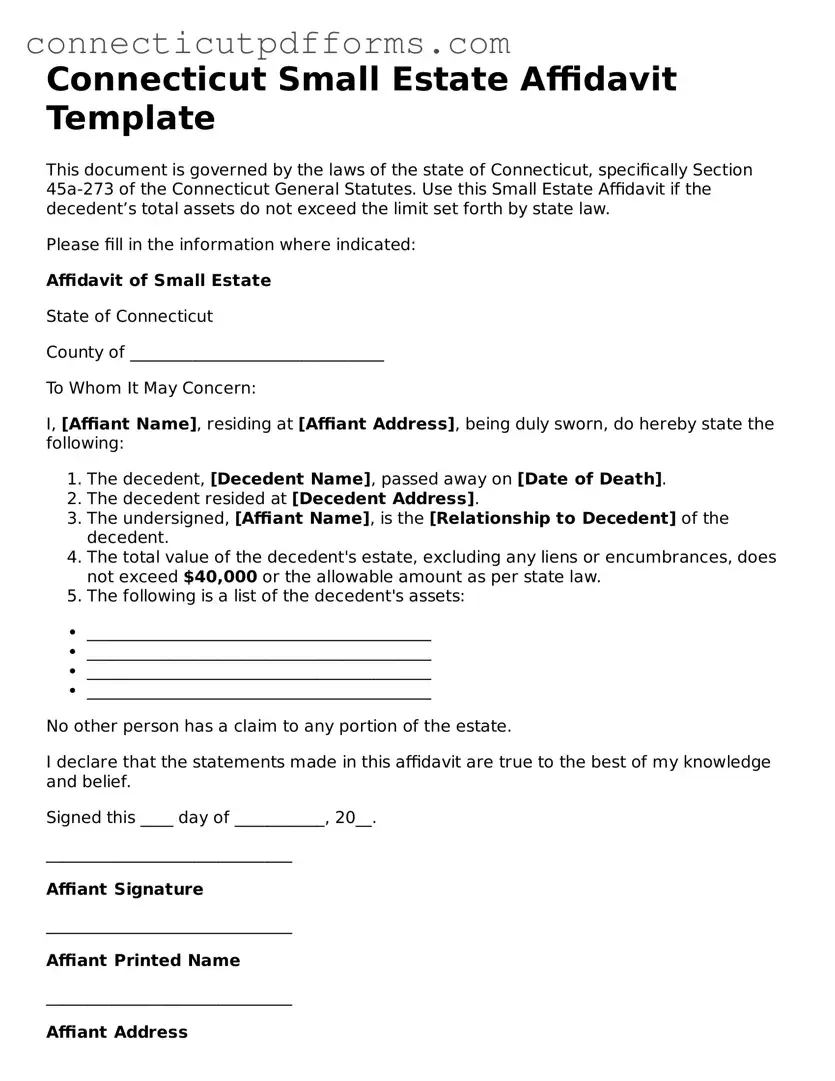Connecticut Small Estate Affidavit Template
This document is governed by the laws of the state of Connecticut, specifically Section 45a-273 of the Connecticut General Statutes. Use this Small Estate Affidavit if the decedent’s total assets do not exceed the limit set forth by state law.
Please fill in the information where indicated:
Affidavit of Small Estate
State of Connecticut
County of _______________________________
To Whom It May Concern:
I, [Affiant Name], residing at [Affiant Address], being duly sworn, do hereby state the following:
- The decedent, [Decedent Name], passed away on [Date of Death].
- The decedent resided at [Decedent Address].
- The undersigned, [Affiant Name], is the [Relationship to Decedent] of the decedent.
- The total value of the decedent's estate, excluding any liens or encumbrances, does not exceed $40,000 or the allowable amount as per state law.
- The following is a list of the decedent's assets:
- __________________________________________
- __________________________________________
- __________________________________________
- __________________________________________
No other person has a claim to any portion of the estate.
I declare that the statements made in this affidavit are true to the best of my knowledge and belief.
Signed this ____ day of ___________, 20__.
______________________________
Affiant Signature
______________________________
Affiant Printed Name
______________________________
Affiant Address
______________________________
Contact Number
Sworn to and subscribed before me this ____ day of ___________, 20__.
______________________________
Notary Public or Commissioner of Superior Court
My commission expires: _______________
